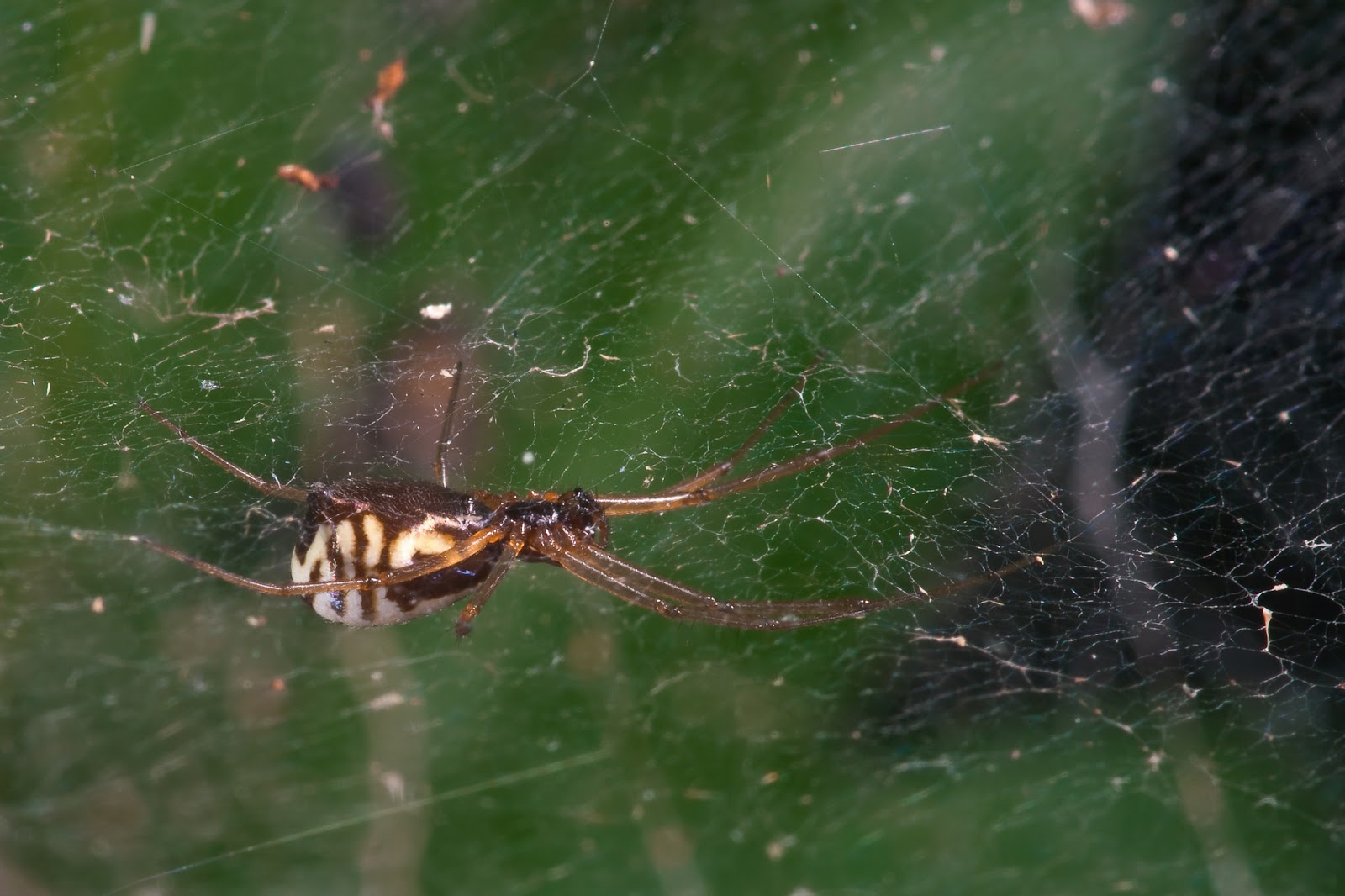
The Bowl and Doily Weaver, also known by its scientific name Heteropoda venatoria, is a fascinating and enigmatic creature that belongs to the spider family. This spider’s unique name comes from its distinct web-building behavior, which resembles a fine lace draping over a bowl-shaped structure.
The Bowl and Doily Weaver is widely distributed in tropical and subtropical regions around the world, making it a common sight in many households and gardens. Despite its prevalence, there are still many intriguing aspects of this spider that most people are unaware of.
In this article, we will explore 17 enigmatic facts about the Bowl and Doily Weaver, shedding light on its appearance, behavior, and unique adaptations. From its intricate web architecture to its hunting techniques, these facts will offer a deeper appreciation for the remarkable world of arachnids and the extraordinary nature of this particular spider.
Key Takeaways:
- Bowl and Doily Weavers are skilled spiders native to Southeast Asia, known for their intricate web designs and impressive weaving abilities. They play a crucial role in controlling insect populations and have a fascinating place in folklore and mythology.
- These spiders are master weavers with complex visual systems, and they exhibit maternal care by protecting their eggs. Despite their venomous fangs, they are not aggressive towards humans and have a long lifespan of up to two years.
The Bowl and Doily Weaver is native to Southeast Asia.
The Bowl and Doily Weaver, scientifically known as Frontinella pyramitela, is a fascinating spider species that can be found in the tropical regions of Southeast Asia. Its unique appearance and intriguing behaviors make it a captivating subject for researchers and nature enthusiasts alike.
The name “Bowl and Doily Weaver” comes from its intricate web design.
This spider species is widely recognized for its distinctive web structure, which resembles a bowl with a doily-like pattern in the center. The intricate design not only serves as a means of catching prey but also helps in camouflaging the spider within its habitat.
Bowl and Doily Weavers are master weavers.
These spiders are skilled weavers and can construct complex webs using their silk. The bowl-shaped part of the web acts as a support structure, while the doily-like pattern in the center serves as a trap for unsuspecting insects.
They are solitary creatures.
Bowl and Doily Weavers are solitary spiders, preferring to live and hunt alone. They establish their webs in secluded areas, such as shrubs or low vegetation, where they can maximize their chances of prey capture.
The female Bowl and Doily Weaver is larger than the male.
Like many spider species, the female Bowl and Doily Weaver tends to be larger in size compared to the male. This sexual dimorphism can be observed in their body proportions and coloration.
The mating ritual of Bowl and Doily Weavers involves careful courtship.
When it is time to mate, the male Bowl and Doily Weaver must approach the female cautiously to avoid being mistaken for prey. The male carefully plucks the strands of the female’s web to signal his intentions, ensuring a successful mating process.
Bowl and Doily Weavers possess venomous fangs.
Although their venom is not considered dangerous to humans, Bowl and Doily Weavers possess venomous fangs that they use to immobilize their prey. The venom helps in breaking down the internal organs of insects before consumption.
These spiders have an impressive lifespan.
Bowl and Doily Weavers have a relatively long lifespan compared to other spider species. On average, they can live up to two years, allowing them to establish their webs and reproduce multiple times.
Bowl and Doily Weavers are predominantly nocturnal.
These spiders are primarily active during the night, using their keen sense of touch and vibration to detect any movement in their web. By hunting at night, they can maximize their chances of capturing insects attracted to their web.
They have specialized hairs on their legs.
Bowl and Doily Weavers have specialized hairs on their legs that help them in sensing vibrations in their web. These hairs act as sensory receptors, allowing them to detect the presence of prey or potential threats.
Bowl and Doily Weavers are not aggressive towards humans.
Despite their venomous fangs, Bowl and Doily Weavers are generally non-aggressive towards humans. They would rather retreat or play dead when confronted, rather than resort to biting or attacking.
Their webs are meticulously maintained.
Bowl and Doily Weavers regularly maintain and repair their webs, ensuring they remain in optimal condition for prey capture. They remove debris and reinforce weak spots, guaranteeing the effectiveness of their hunting strategy.
Bowl and Doily Weavers exhibit maternal care.
After mating, the female Bowl and Doily Weaver lays her eggs and protects them within a silken egg sac. She remains close by, guarding the eggs until they hatch, at which point the spiderlings disperse and begin their independent lives.
They are important for controlling insect populations.
Bowl and Doily Weavers, like other spider species, play a crucial role in maintaining the balance of ecosystems by controlling the population of insects. Their effective trapping mechanism helps in keeping insect numbers in check.
These spiders have complex visual systems.
Bowl and Doily Weavers possess multiple pairs of eyes, each serving a specific purpose. These eyes allow them to detect movement, assess the size of prey, and navigate their surroundings with accuracy.
Bowl and Doily Weavers can become prey themselves.
Despite their impressive web-building skills, Bowl and Doily Weavers can fall victim to predators such as birds, praying mantises, or even other spider species. They must remain vigilant and employ a combination of defensive strategies to survive.
Bowl and Doily Weavers have a place in folklore and mythology.
In some cultures, Bowl and Doily Weavers are associated with stories and myths. Their unique web design and mysterious behaviors have captured the imaginations of people, leading to various interpretations and beliefs.
As we have explored these 17 enigmatic facts about the Bowl and Doily Weaver, it becomes evident that these spiders are truly fascinating creatures. Their intricate webs, skilled weaving abilities, and intriguing behaviors make them a captivating subject for study and admiration. So, the next time you come across a web with an intricate doily-like pattern, take a moment to appreciate the incredible work of the Bowl and Doily Weaver.
Conclusion
In conclusion, the Bowl and Doily Weaver is a fascinating creature that captivates the imagination with its intricate web-building abilities. With its unique appearance and elusive nature, it has become a subject of intrigue for both scientists and nature enthusiasts alike.From its ability to weave a bowl-shaped web with a delicate doily-like pattern to its solitary lifestyle and nocturnal habits, the Bowl and Doily Weaver stands out among other arachnids. Its adaptive skills, such as changing the location and size of its webs, further highlight its resourcefulness in survival.Despite its enigmatic nature, researchers continue to uncover new facts about this remarkable spider. Its role in the ecosystem and potential applications in fields such as nanotechnology provide avenues for further exploration and study.Next time you come across a web with a beautiful pattern resembling a bowl and doily, take a moment to appreciate the artistry of the Bowl and Doily Weaver and the intricate wonders of the natural world.
FAQs
Q: What is a Bowl and Doily Weaver?
A: The Bowl and Doily Weaver, scientific name Frontinella pyramitela, is a small species of spider known for its unique web-building abilities. It constructs a bowl-shaped web with a doily-like pattern, which it uses to catch prey.
Q: Where can the Bowl and Doily Weaver be found?
A: The Bowl and Doily Weaver is native to North America and can be found in various habitats, including forests, fields, and gardens. It is commonly found in the eastern United States and Canada.
Q: What is the purpose of the bowl-shaped web?
A: The bowl-shaped web serves as a trap for catching insects and other small prey. The design allows the spider to hide underneath the bowl and quickly strike when prey gets entangled in the web.
Q: Is the Bowl and Doily Weaver venomous?
A: The Bowl and Doily Weaver possesses venom that it uses to immobilize its prey. However, its venom is not considered harmful to humans and is generally not a cause for concern.
Q: How does the Bowl and Doily Weaver reproduce?
A: The Bowl and Doily Weaver follows a typical spider reproduction process. After mating, the female will lay eggs and protect them until they hatch. The spiderlings will then disperse and start their own independent lives.
Was this page helpful?
Our commitment to delivering trustworthy and engaging content is at the heart of what we do. Each fact on our site is contributed by real users like you, bringing a wealth of diverse insights and information. To ensure the highest standards of accuracy and reliability, our dedicated editors meticulously review each submission. This process guarantees that the facts we share are not only fascinating but also credible. Trust in our commitment to quality and authenticity as you explore and learn with us.


